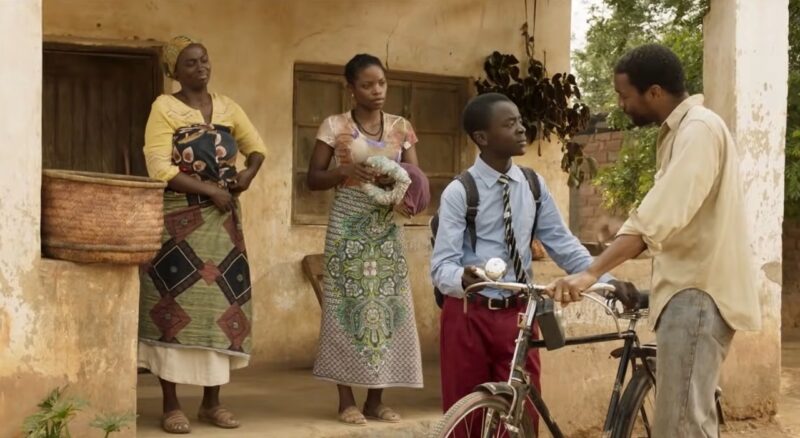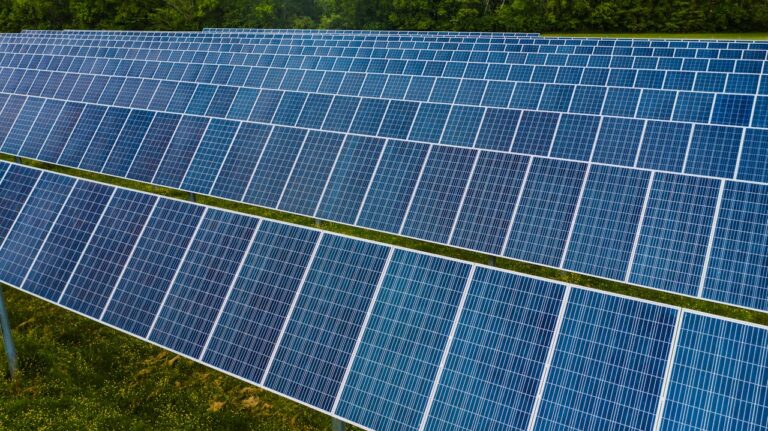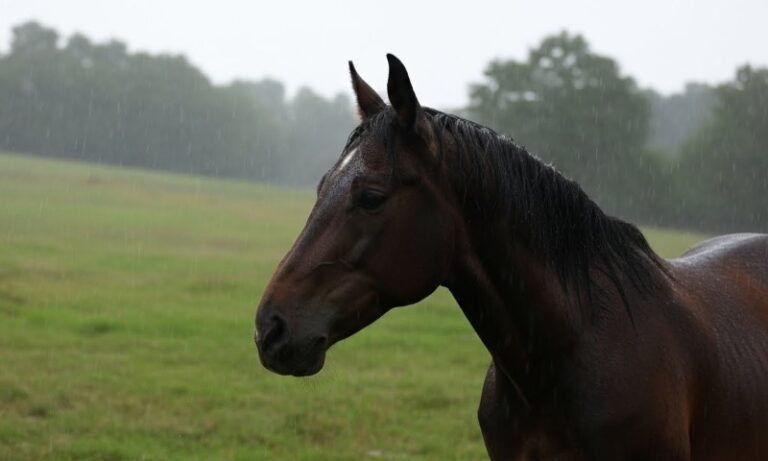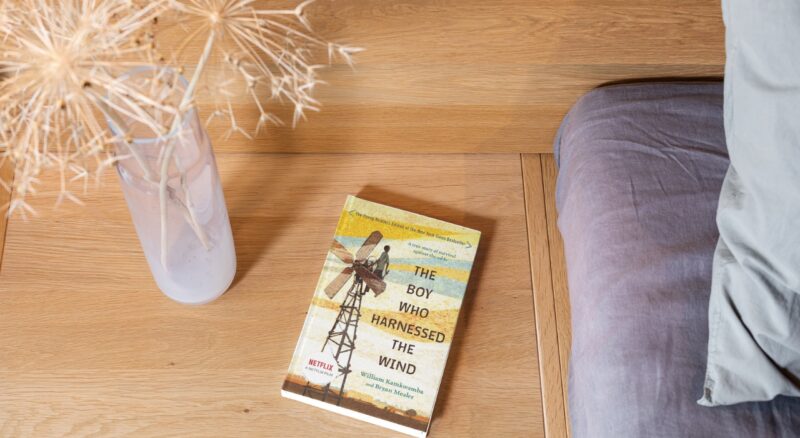“The Boy Who Harnessed the Wind” is a touching tale that captures the essence of resilience, innovation, and the unbeatable human spirit.
Based on the real-life story of William Kamkwamba, a young Malawian boy, the narrative goes deep into the challenges faced by a community dealing with drought and famine and the extraordinary measures taken by a young boy to save his village.
Setting the Scene

The story is set against the backdrop of a small village in Malawi in the early 2000s. The village, like many others in the region, is primarily agrarian, with families relying on their crops for sustenance.
Young William Kamkwamba, portrayed with depth by Maxwell Simba, is introduced as a beacon of curiosity and innovation amidst this setting. With a penchant for electronics and an insatiable curiosity, William spends his free time at the local junkyard, salvaging parts to craft batteries and other makeshift devices.
However, nature has other plans. Unpredictable weather patterns, coupled with land disputes, cast a shadow of uncertainty over the village’s crops. The impending drought and the subsequent famine become the central challenges that the community grapples with.
Quest for Knowledge
Despite the adversities, William’s spirit remains unbroken. His thirst for knowledge leads him to strike a deal with his teacher, leveraging a secret about a clandestine affair, to gain access to the school library after being expelled due to unpaid fees.
It is in the dusty aisles of this library that William discovers a textbook on energy, a discovery that sets him on a path that would change the fate of his village.
Descent into Chaos
As days turn into weeks and weeks into months, the situation in the village deteriorates. Political unrest adds to the community’s woes. Their already meager harvest is stolen, government rations prove inadequate, and a sense of hopelessness pervades.
Families are torn apart, with William’s sister eloping with the teacher in a bid to reduce the number of mouths to feed.
Harnessing the Wind

Amidst this backdrop of despair, William’s determination to harness the wind is in the main focus. His vision is simple yet revolutionary: build a windmill to power an electric pump, which in turn would supply water to the parched farmlands.
The journey, however, is anything but straightforward. William faces opposition at every turn, most notably from his father, who views the windmill as a pipe dream. The most turbulent of this conflict comes when William requests to dismantle his father’s bicycle to obtain a dynamo for the windmill.
Themes and Symbolism
Director Chiwetel Ejiofor masterfully weaves multiple themes into the narrative. Poverty, political upheaval, the importance of education, and the transformative power of hope are all explored in depth.
The windmill itself becomes a symbol of innovation, resilience, and the belief that even in the face of insurmountable challenges, human ingenuity can prevail. The film also touches upon the socio-political dynamics of regions like Malawi.
The interplay of power, politics, and poverty is depicted with nuance, offering viewers a detailed view into the complexities of life in such communities.
A Deeper Dive into Characters
Beyond William, the film offers a rich tapestry of characters, each bringing their own depth to the story. William’s father, a figure of traditionalism and skepticism, undergoes a transformation, eventually becoming his son’s biggest supporter.
His mother, a pillar of strength and wisdom, plays a pivotal role in bridging the gap between father and son. The dynamics within the Kamkwamba family serve as a microcosm of the broader community, reflecting the tensions, hopes, and dreams of a village in crisis.
Differences Between the Book and the Movie
While both the book and the movie aim to capture the essence of William Kamkwamba’s journey, there are notable differences between the two.
Depth of Background Information
The book provides a more in-depth background on Malawi’s history, culture, and the socio-political environment. On the other hand, there are many details that didn’t appear in the movie due to time limitations.
Character Development
The book offers a more comprehensive exploration of various characters, including William’s family members, friends, and other villagers. Their motivations, fears, and aspirations are detailed, providing a richer understanding of their roles.
Have you watched the movie and also read the book?
Fine! Now you may consider this to create your own ebook with prominent templates. It can be a great way for people to read your version of the review.
William’s Experiments
The film focuses primarily on the windmill project, with less emphasis on his other experiments and the trial-and-error process he underwent. On the other side, reading this piece can provide more info about various experiments, failures, and learnings.
Personal Struggles and Emotions
While the movie does portray William’s challenges, it leans more towards visual storytelling, capturing the emotions through performances, visuals, and music. The written format can tell us more about his thoughts, desires, challenges, and issues.
Timeline
It can be a longer and more interesting journey if you choose a written piece over a movie. That will give you a wider picture of the ambient, culture, relations, challenges, and many other details that are face-paced in the movie.
FAQs

Are There Other Innovations or Projects that William Kamkwamba Has Worked on After the Windmill?
Yes, after the success of his windmill project, William Kamkwamba continued his education and worked on various sustainable energy projects to benefit his community and other parts of Africa.
How Has William Kamkwamba’s Story Impacted Global Awareness About Sustainable Energy Solutions in Rural Areas?
William Kamkwamba’s story has garnered international attention, highlighting the importance of sustainable energy solutions in rural areas. His journey underscores the potential of grassroots innovations in addressing global challenges like energy access and climate change.
How Has the Community in Malawi Benefited from William’s Windmill Project?
William’s windmill provided much-needed electricity and pumped water for irrigation, alleviating the effects of drought in his village. This innovation not only helped in immediate sustenance but also showcased the potential of sustainable energy solutions in rural settings, inspiring many others in the region.
Summary
While both the book and the movie capture the essence of William Kamkwamba’s inspiring journey, they offer different perspectives and depths of exploration. The book provides a more detailed and comprehensive account, while the movie offers a visual and condensed rendition of the story.
If you want to check other interesting stories about various topics, check our website.











